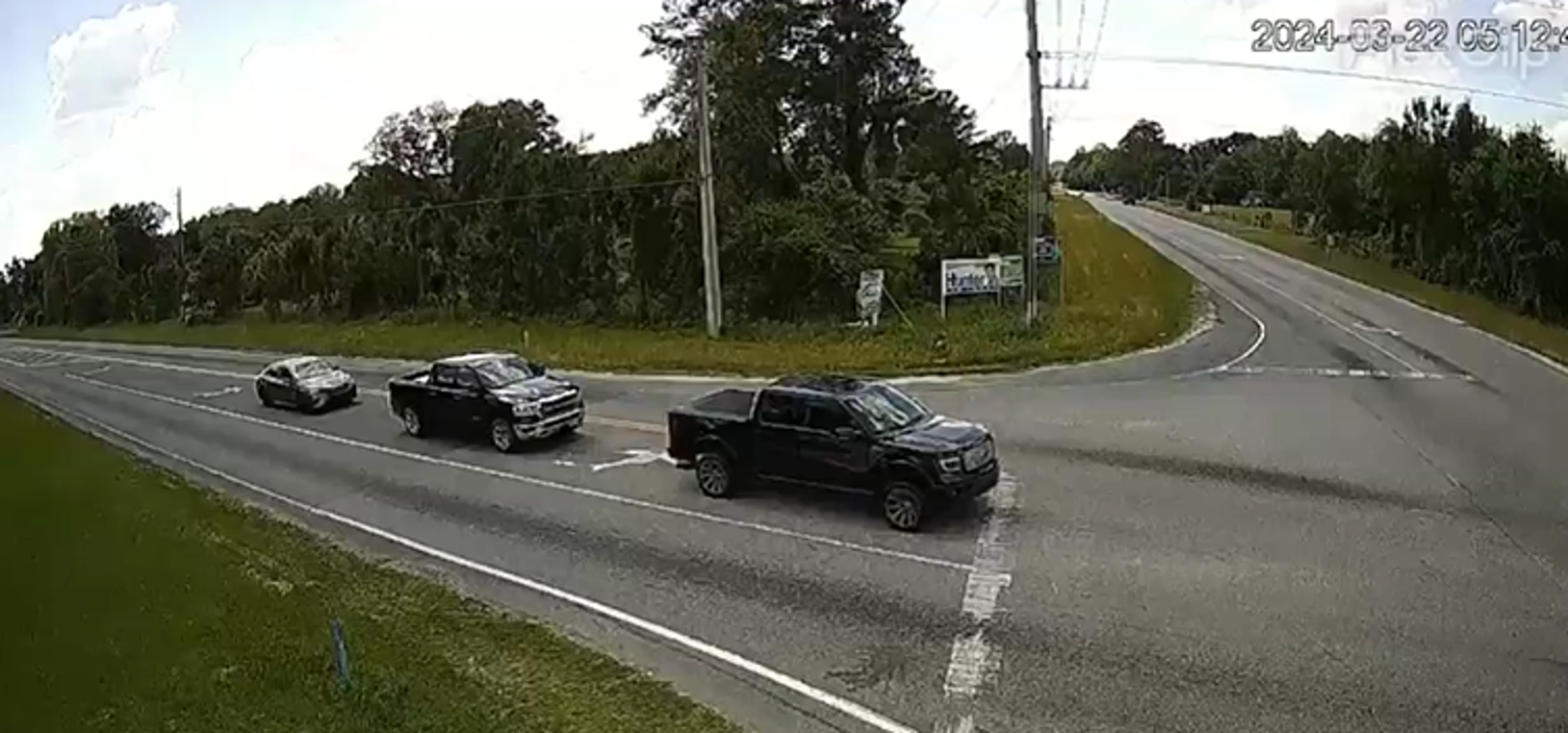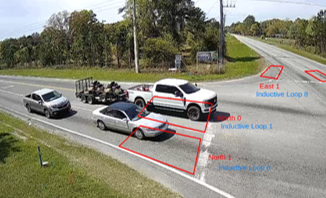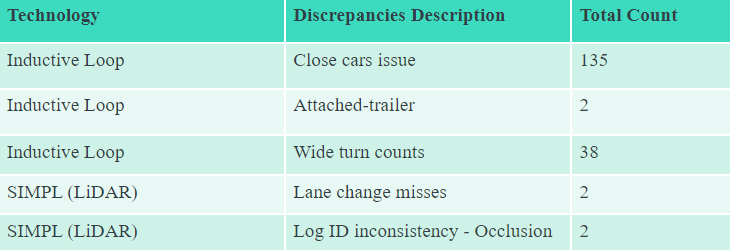99% LiDAR Detection Accuracy in Columbia County, FL.
-
Context and Location
-
Technology
-
Methodology

Comparing LiDAR and AI with inductive loops
LiDAR sensor technology offers a revolutionary, non-intrusive method for detecting all road users in real-time for better actuation and enhanced safety. For cities, planners, and traffic operations teams considering a transition to a more cost-effective and efficient alternative, the accuracy and reliability of the data and analytics provided by LiDAR must be thoroughly verified.
This is why Seyond set out to confirm the accuracy of its SIMPL solution using two sensors and a sophisticated perception software. This test was done to compare the accuracy of Seyond’s SIMPL solution against two existing inductive loops.
Testing took place in Lake City in Columbia County, Florida. The solution is installed at a standard intersection with three lanes in both directions.

LiDAR sensors and edge box
Two Falcon Prime LiDAR sensors running on FW4464 were installed on a cement pole at the corner of the intersection along with a POC edge box running our perception software (v1.3). This set up was specifically tailored to address the unique conditions of the location. Due to the difficulties in accessing suitable wiring to power the LiDAR sensor at another cement pole, both sensors were mounted on the same pole. This arrangement offered a comprehensive view of the intersection, although it also increased the risk of occlusion.

Comparing two technologies against manual visual count
To assess the accuracy of SIMPL, a camera installed above the lidar sensors recorded road traffic to act as a ground truth. The footage was used to review discrepancies between the inductive loop and SIMPL
To ensure a fair comparison, Seyond's team placed the virtual loops in the exact same location as the inductive loops.
This testing was done from 2024-04-22 to 2024-04-23, involving 2 hours 50 minutes of recording analyzing two inductive loops, which is the equivalent of 5 hours 40 minutes of loop analysis.
The LiDAR-based solution had a 99% accuracy rate
In total, 909 events were detected during the test through a visual manual count, acting as ground truth. The total count accuracy of the LiDAR solution was 99% and Seyond's solution proved to be more accurate than the inductive loop.

SIMPL had fewer discrepancies than the inductive loops when comparing to the ground truth


Reliable system
From direct integrations with card networks and banks to checkout flows in the browser, we operate on and optimize at every level of the financial stack.

50+ integrations
Lorem ipsum dolor sit amet, consectetur adipiscing elit, sed do eiusmod tempor incididunt ut labore et.

Intelligent optimizations
Ut enim ad minim veniam, quis nostrud exercitation ullamco laboris nisi ut aliquip ex ea commodo consequat.

Intuitive design
Duis aute irure dolor in reprehenderit in voluptate velit esse cillum dolore eu fugiat nulla pariatur.
Inductive Loop Discrepancies
1. Close Cars
135 misses were due to cars being close together in the inductive loop area. In these cases, the inductive loop counted them as one vehicle and could not discern between individual vehicle counts. The image above is an example of such a miss. The three vehicles that turn left actually only register as one long event from the Inductive loop.
3. Wide Turn Count
The inductive loops caught 38 events where a vehicle coming from the west side did a 'wide turn' to go north. As the car briefly went in the inbound lane and over the inductive loop, it was counted as a approaching car. The Virtual Loop solution did not log these 38 wide turn events.
LiDAR Solution Discrepancies
2. Occlusion
There were two occurrences where there was Log ID non-tracking. One of them was due to occlusion when a larger vehicle came in between the LiDAR sensor and a smaller vehicle and the solution counted the smaller vehicle twice, once before it was occluded and once after. This issue has been resolved thanks to better prediction and tracking algorithms to reduce the effects of occlusion.
In Summary
Overall, the accuracy of the Lidar solution compared to the inductive loop is nearly perfect but still requires some adjustment. The Seyond Team also plans to continue with a series of tests to investigate further the accuracy of the Virtual Loop solution in adverse weather and lighting conditions.
Seyond is a leading global provider of image-grade LiDAR technology, powering a safer, smarter and more mobile world across the automotive, intelligent transportation, robotics and industrial automation sectors. Founded in Silicon Valley with strategically placed research and manufacturing facilities across the globe, Seyond is crafting LiDAR solutions that elevate autonomous driving and fuel the advancement of smart infrastructure development.
